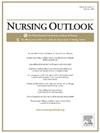护理教育中以模拟为基础的学习,以对抗污名和歧视:范围审查
IF 3.7
2区 医学
Q1 NURSING
引用次数: 0
摘要
护士通常是医疗机构的第一个接触点。他们是与患者接触最多的医疗保健专业人员,这表明确保护士受过教育并有能力为所有患者提供非污名化的医疗保健的重要性。目的了解在护理教育中使用模拟学习(SBL)的已知情况,以尽量减少污名化和歧视行为。方法范围审查方法。sbl经常用于护理教育,以解决各种历史边缘化人群的污名化和歧视行为。为此目的使用SBL是相对较新的,并且正在增加。这种新出现的兴趣强调了明确确定哪种模拟模式对哪些人群有效的重要性。结论本综述的结果表明,SBL在提高护理学生的意识、信心和拓宽视野方面具有良好的前景。需要进一步的研究来确定SBL如何转化为个人的临床实践,并需要进一步的探索,如纵向评估和实验设计。本文章由计算机程序翻译,如有差异,请以英文原文为准。
Simulation-based learning in nursing education to counter stigma and discrimination: A scoping review
Background
Nurses are often the first point of contact in healthcare settings. They are the healthcare professionals with whom patients have the most contact indicating the importance of ensuring that nurses are educated and equipped to provide nonstigmatizing healthcare to all patients.
Purpose
To map what is known about the use of simulation-based learning (SBL) in nursing education to minimize stigmatizing and discriminatory behaviors.
Methods
Scoping review methodology.
Discussion
SBL is frequently used in nursing education to address stigmatizing and discriminatory behaviors with a variety of historically marginalized populations. The use of SBL to for this purpose is relatively new and is increasing. This emergent interest underscores the importance of clearly identifying which simulation modalities for which populations are effective.
Conclusion
The results of this review indicate that SBL shows promise in increased awareness, confidence and widening perspectives in nursing students. Further investigation is needed to identify how SBL translates to individuals’ clinical practice and warrants further exploration, like longitudinal evaluations and experimental design.
求助全文
通过发布文献求助,成功后即可免费获取论文全文。
去求助
来源期刊

Nursing Outlook
医学-护理
CiteScore
6.20
自引率
7.00%
发文量
109
审稿时长
25 days
期刊介绍:
Nursing Outlook, a bimonthly journal, provides innovative ideas for nursing leaders through peer-reviewed articles and timely reports. Each issue examines current issues and trends in nursing practice, education, and research, offering progressive solutions to the challenges facing the profession. Nursing Outlook is the official journal of the American Academy of Nursing and the Council for the Advancement of Nursing Science and supports their mission to serve the public and the nursing profession by advancing health policy and practice through the generation, synthesis, and dissemination of nursing knowledge. The journal is included in MEDLINE, CINAHL and the Journal Citation Reports published by Clarivate Analytics.
 求助内容:
求助内容: 应助结果提醒方式:
应助结果提醒方式:


